Abstract
The Edinburgh Register of the Newborn 1964-1968 and the Edinburgh Scoliosis Clinic 1964-1971 have been used to establish the population frequency in the city of the idiopathic forms of talipes equinovarus and calcaneovalgus, metatarsus varus, congenital dislocation of the hip, and infantile scoliosis. A survey of 165 patients now aged 7 to 11 years showed an aetiological relationship, but with differing environmental factors. These factors were established by comparison with the Edinburgh Register control group of 692 normal infants born over the same period, giving a unique opportunity to obtain more accurate antenatal data than has previously been possible. The principal associations were: talipes equinovarus with antepartum haemorrhage and maternal hypertension; metatarsus varus with twin pregnancies; congenital dislocation of the hip with first born children, older than average fathers, breech presentation, a significant lack of menstrual problems in the mother, and maternal upper respiratory infection during pregnancy; infantile idiopathic scoliosis with breech presentation, prematurity, and the onset of the curve in the winter months. No significant association with raised intrauterine pressure (hydramnios or oligohydramnios) was found among these simple idiopathic deformities. It is concluded that the multifactorial genetic background in likely to be similar in all, but that the additional environmental element is variable.
Full text
PDF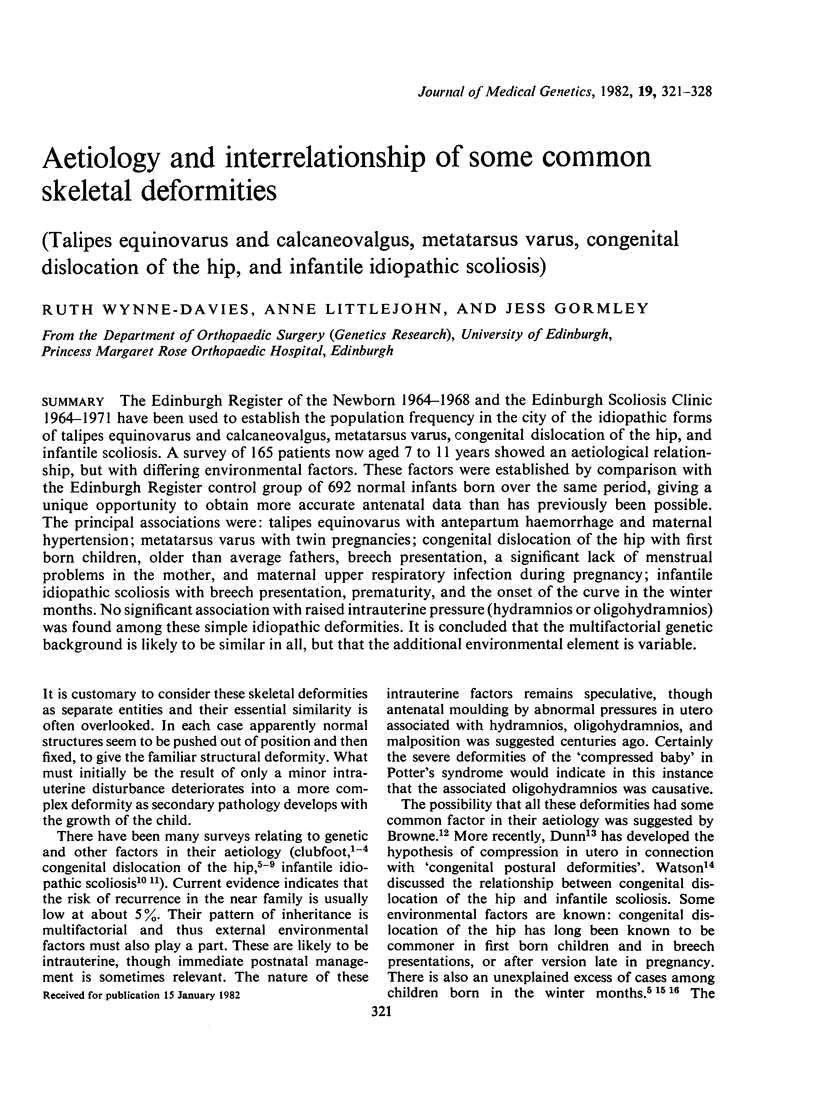
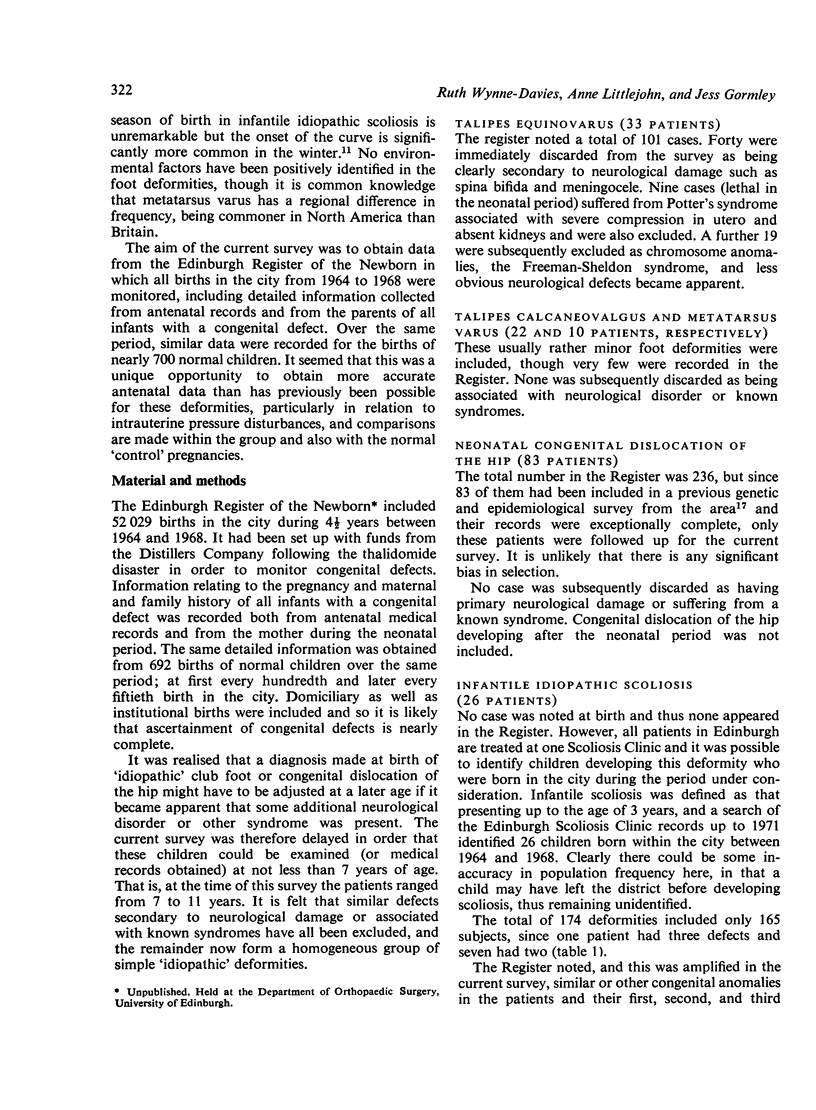
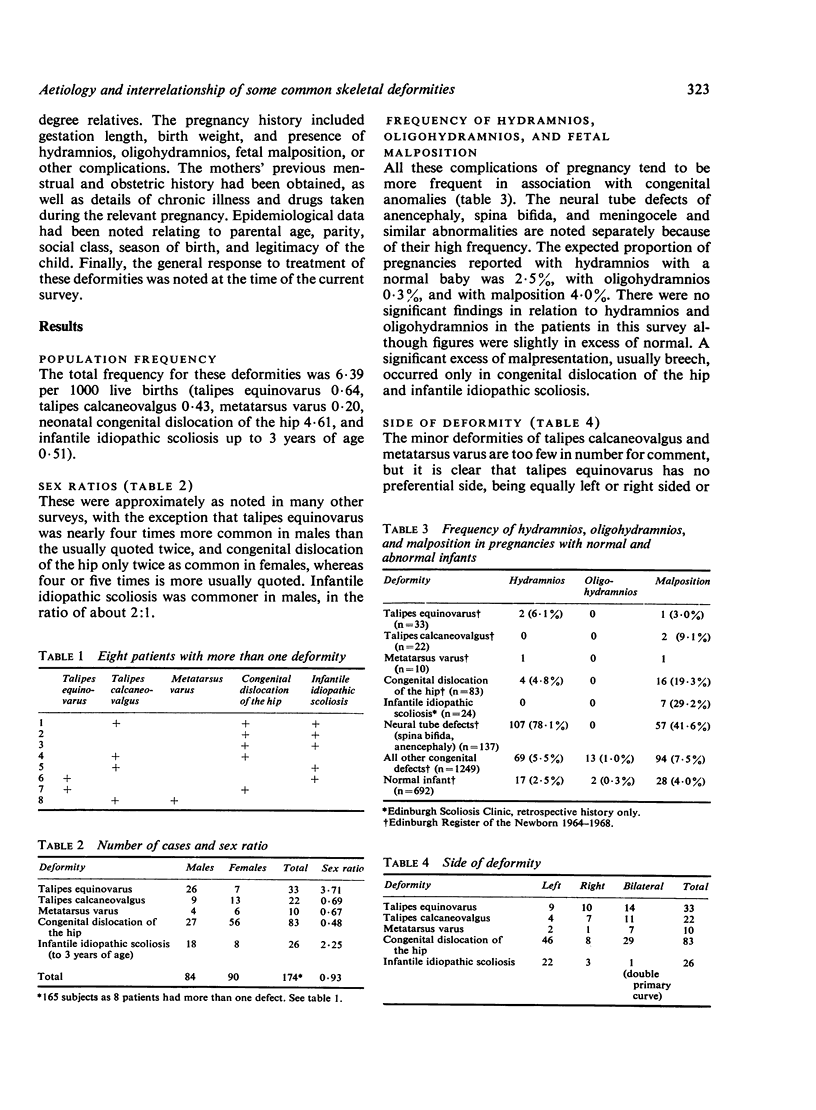
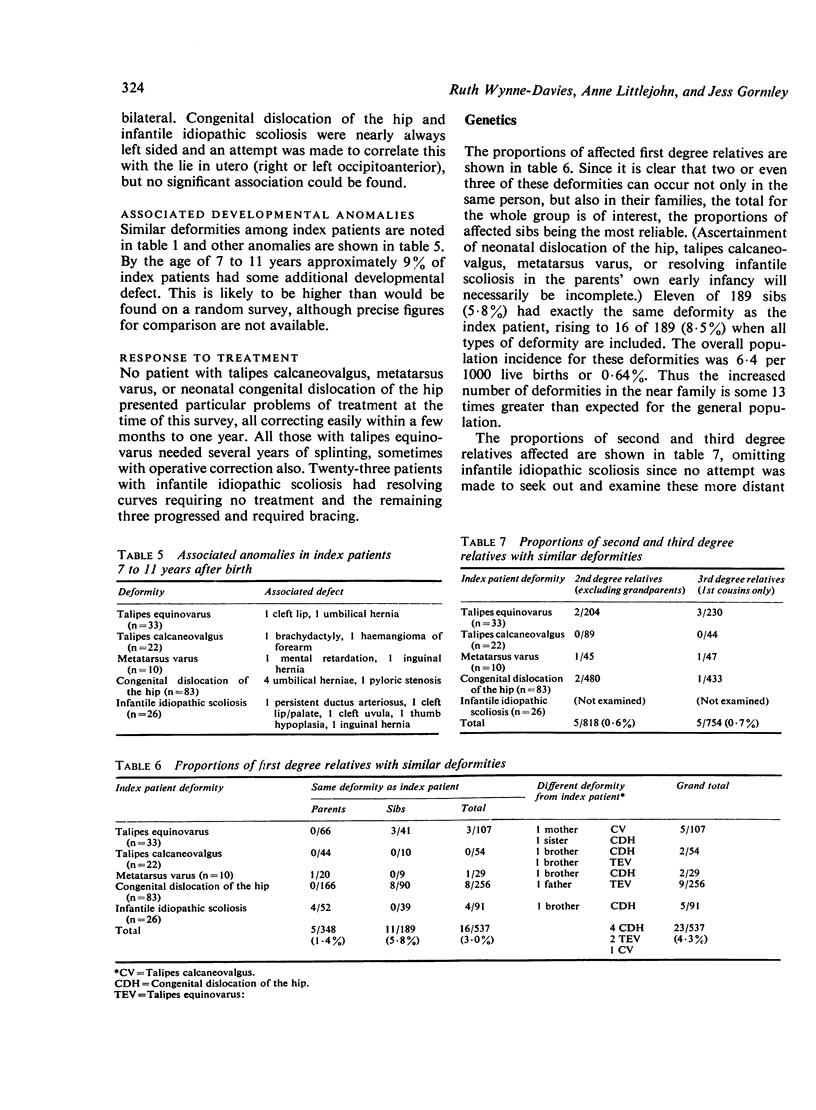

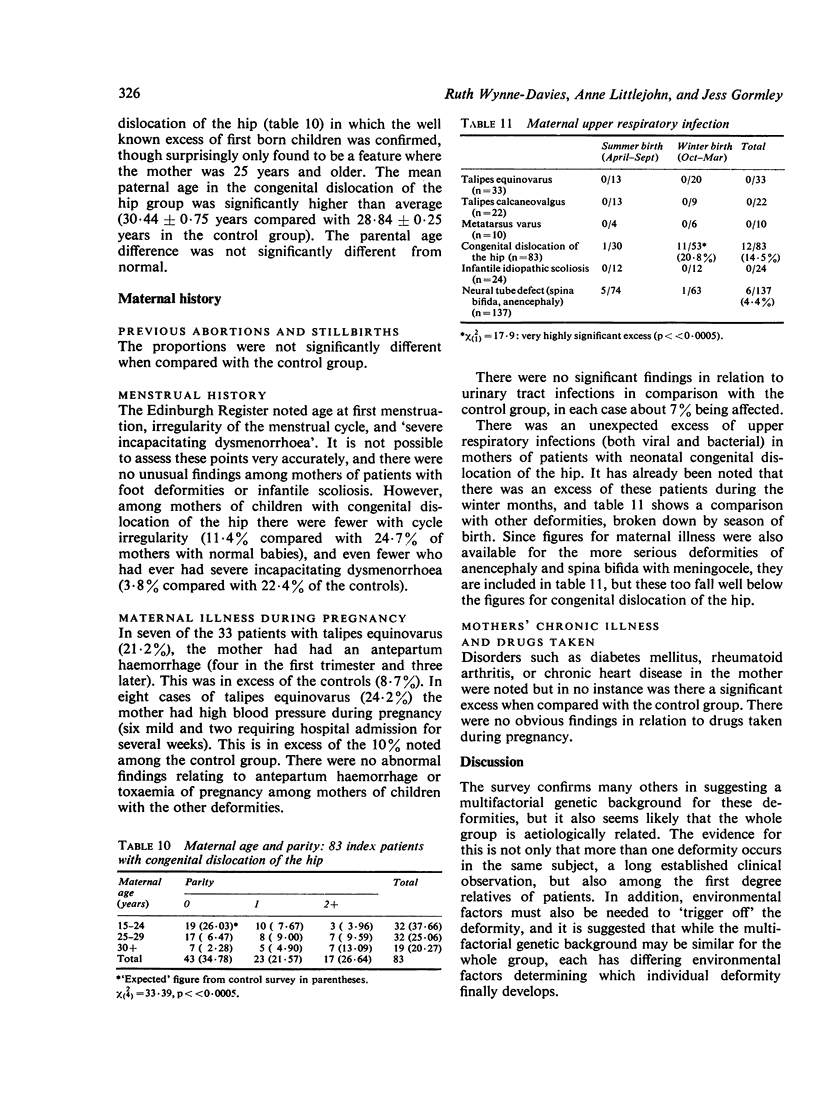
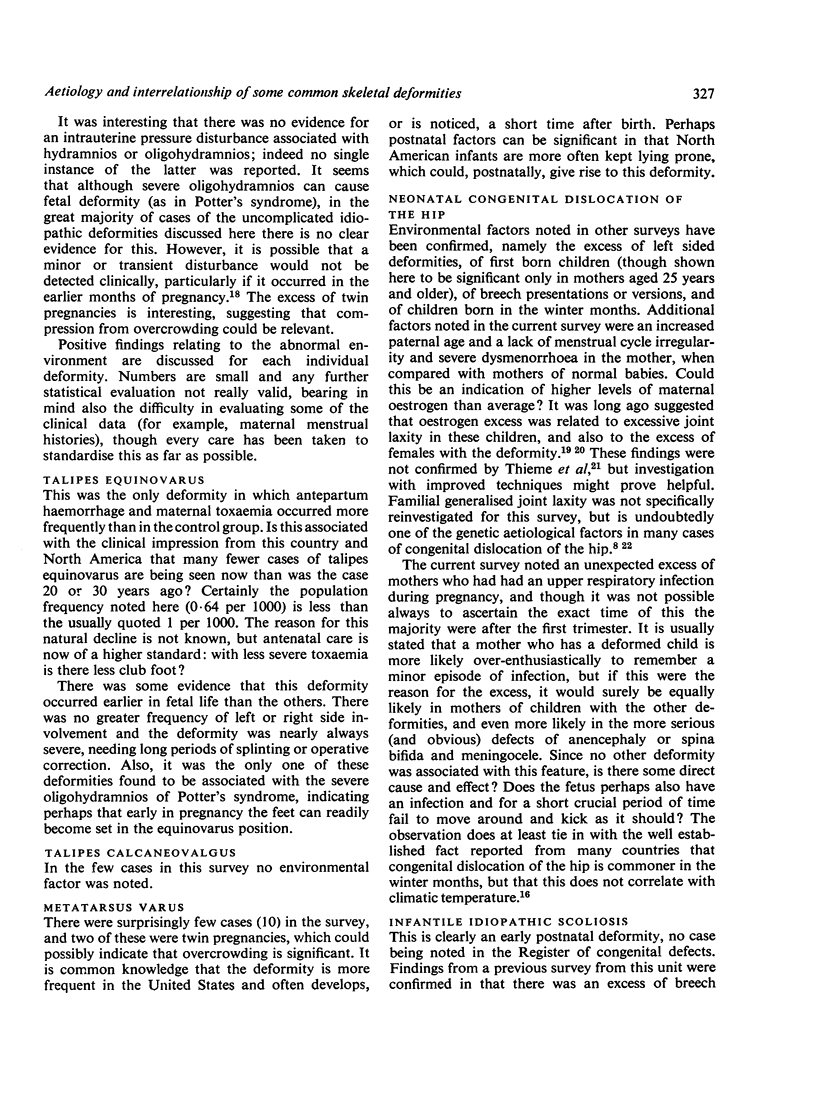
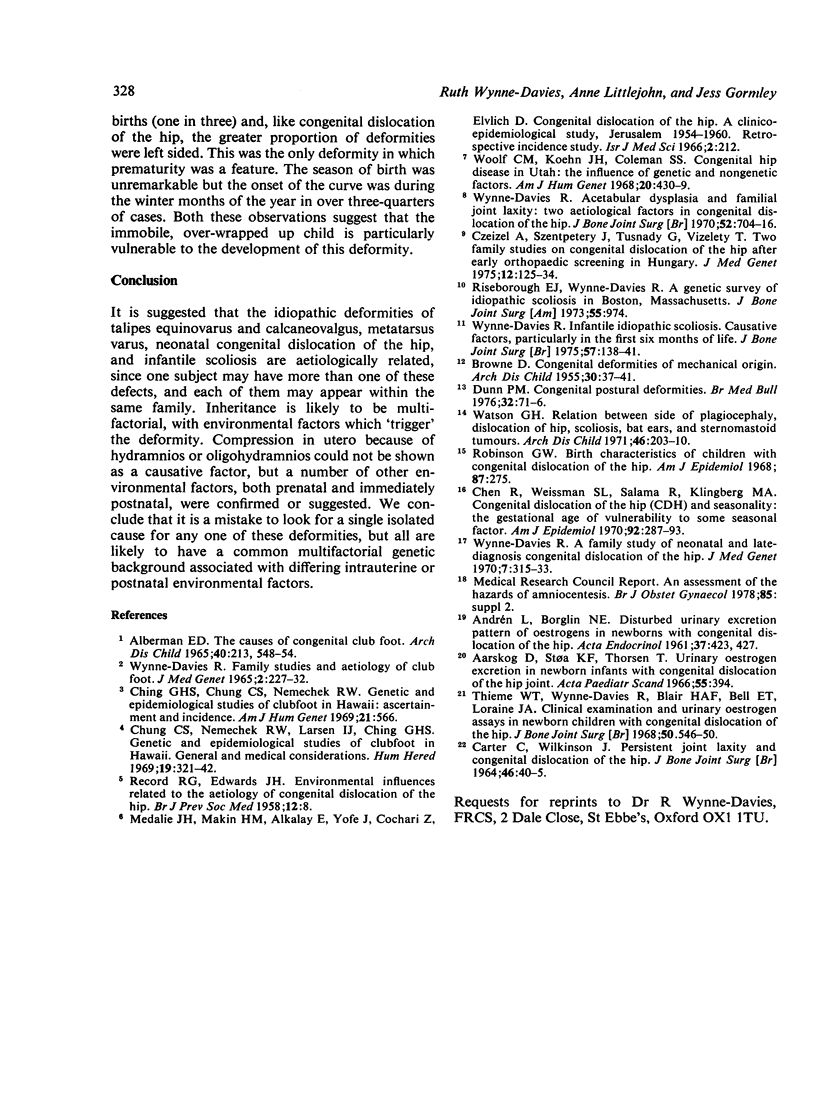
Selected References
These references are in PubMed. This may not be the complete list of references from this article.
- ANDREN L., BORGLIN N. E. Disturbed urinary excretion pattern of oestrogens in newborns with congenital dislocation of the hip. I. The excretion of oestrogen during the first few days of life. Acta Endocrinol (Copenh) 1961 Jul;37:423–426. doi: 10.1530/acta.0.0370423. [DOI] [PubMed] [Google Scholar]
- Aarskog D., Stoa K. F., Thorsen T. Urinary oestrogen excretion in newborn infants with congenital dysplasia of the hip joint. Acta Paediatr Scand. 1966 Jul;55(4):394–397. doi: 10.1111/j.1651-2227.1966.tb08810.x. [DOI] [PubMed] [Google Scholar]
- BROWNE D. Congenital deformities of mechanical origin. Arch Dis Child. 1955 Feb;30(149):37–41. doi: 10.1136/adc.30.149.37. [DOI] [PMC free article] [PubMed] [Google Scholar]
- Chen R., Weissman S. L., Salama R., Klingberg M. A. Congenital dislocation of the hip (CDH) and seasonality: the gestational age of vulnerability to some seasonal factor. Am J Epidemiol. 1970 Nov;92(5):287–293. doi: 10.1093/oxfordjournals.aje.a121209. [DOI] [PubMed] [Google Scholar]
- Ching G. H., Chung C. S., Nemechek R. W. Genetic and epidemiological studies of clubfoot in Hawaii: ascertainment and incidence. Am J Hum Genet. 1969 Nov;21(6):566–580. [PMC free article] [PubMed] [Google Scholar]
- Chung C. S., Nemechek R. W., Larsen I. J., Ching G. H. Genetic and epidemiological studies of clubfoot in Hawaii. General and medical considerations. Hum Hered. 1969;19(4):321–342. doi: 10.1159/000152236. [DOI] [PubMed] [Google Scholar]
- Czeizel A., Szentpétery J., Tusnády G., Vizkelety T. Two family studies on congenital dislocation of the hip after early orthopaedic screening Hungary. J Med Genet. 1975 Jun;12(2):125–130. doi: 10.1136/jmg.12.2.125. [DOI] [PMC free article] [PubMed] [Google Scholar]
- Dunn P. M. Congenital postural deformities. Br Med Bull. 1976 Jan;32(1):71–76. doi: 10.1093/oxfordjournals.bmb.a071327. [DOI] [PubMed] [Google Scholar]
- RECORD R. G., EDWARDS J. H. Environmental influences related to the aetiology of congenital dislocation of the hip. Br J Prev Soc Med. 1958 Jan;12(1):8–22. doi: 10.1136/jech.12.1.8. [DOI] [PMC free article] [PubMed] [Google Scholar]
- Riseborough E. J., Wynne-Davies R. A genetic survey of idiopathic scoliosis in Boston, Massachusetts. J Bone Joint Surg Am. 1973 Jul;55(5):974–982. [PubMed] [Google Scholar]
- Robinson G. W. Birth characteristics of children with congenital dislocation of the hip. Am J Epidemiol. 1968 Mar;87(2):275–284. doi: 10.1093/oxfordjournals.aje.a120818. [DOI] [PubMed] [Google Scholar]
- Thieme W. T., Wynne-Davies R. Clinical examination and urinary oestrogen assays in newborn children with congenital dislocation of the hip. J Bone Joint Surg Br. 1968 Aug;50(3):546–550. [PubMed] [Google Scholar]
- Watson G. H. Relation between side of plagiocephaly, dislocation of hip, scoliosis, bat ears, and sternomastoid tumours. Arch Dis Child. 1971 Apr;46(246):203–210. doi: 10.1136/adc.46.246.203. [DOI] [PMC free article] [PubMed] [Google Scholar]
- Woolf C. M., Koehn J. H., Coleman S. S. Congenital hip disease in Utah: the influence of genetic and nongenetic factors. Am J Hum Genet. 1968 Sep;20(5):430–439. [PMC free article] [PubMed] [Google Scholar]
- Wynne-Davies R. A family study of neonatal and late-diagnosis congenital dislocation of the hip. J Med Genet. 1970 Dec;7(4):315–333. doi: 10.1136/jmg.7.4.315. [DOI] [PMC free article] [PubMed] [Google Scholar]
- Wynne-Davies R. Acetabular dysplasia and familial joint laxity: two etiological factors in congenital dislocation of the hip. A review of 589 patients and their families. J Bone Joint Surg Br. 1970 Nov;52(4):704–716. [PubMed] [Google Scholar]
- Wynne-Davies R. Family studies and aetiology of club foot. J Med Genet. 1965 Dec;2(4):227–232. doi: 10.1136/jmg.2.4.227. [DOI] [PMC free article] [PubMed] [Google Scholar]
- Wynne-Davies R. Infantile idiopathic scoliosis. Causative factors, particularly in the first six months of life. J Bone Joint Surg Br. 1975 May;57(2):138–141. [PubMed] [Google Scholar]


